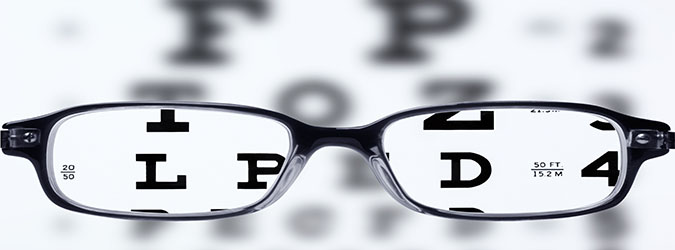
Myopia
Myopia is the term used to describe nearsightedness. In myopic patients, close objects can be seen clearly, but blurriness occurs when viewing objects that are farther away. Myopia can occur if the patient’s eyeball is excessively long. Myopia is also caused by excessive curvature in the cornea, or the eye’s front cover. This blurriness occurs because the light entering the patient’s eye is incorrectly focused.
There are currently 47 million Americans over the age of 20 who suffer myopia. According to the National Eye Institute, myopia in the United States has increased by more than 66 percent since the 1970s.
Causes of Myopia
Traditional research indicates that myopia is hereditary. However, new research suggests that there are a series of other factors that can contribute to the development of myopia. Specialists theorize that the rapid increase of visual stress in the 21st century is contributing to the growth of myopia. Visual stress can include hours spent reading, playing video games, doing work on the computer, and using hand-held devices.
Myopia typically first develops in children of school age. After the early onset, it continues to grow throughout the patient’s childhood until around age 20. In adults, myopia may develop due to excessive visual stress and health conditions including diabetes.
Symptoms of Myopia
Patients who have not yet been diagnosed typically exhibit mild to moderate myopia. The most common symptom is vision that gets progressively more blurry over time. Patients with myopia may experience difficulty seeing distant objects as clearly as before, such as reading road signs while driving. Activities such as reading a book or using a computer will typically be unaffected.
Other symptoms of myopia include:
- Eye strain
- Squinting
- Headaches
Myopia Correction vs. Myopia Control
Traditional treatments for myopia include prescribing contact lenses or eyeglasses to patients. LASIK, PRK, and other refractive surgery procedures can be used as a permanent solution to a patient’s myopia. However, many argue that myopia control should be practiced to prevent the condition from worsening in patients and rapidly growing within the population.
Myopia control is especially a concern due to the fact that myopia increases the likelihood of developing serious eye conditions. Patients with myopia have an increased risk of detached retina, cataracts, and conditions.
Vision Shaping Treatment
Vision shaping treatment (VST) uses orthokeratology lenses, or overnight vision retainers, to help stop or slow the progression of myopia. The lenses are gas permeable and work to gently reshape the cornea while the patient sleeps. Vision shaping treatment retainers are custom-made for each patient’s eye using sophisticated imaging and design software. Vision shaping treatment is generally well-accepted by children and adult patients with minimal discomfort.
Medications for Myopia Control
Antimuscarinic drugs can also be used to control myopia. These drugs include pirenzepine and atropine. However, many eye care professionals opt not to use them due to the unknown success rates and side effects. These drugs can have visual, ocular, and systemic side effects.
Dual Focus Lenses
An experimental new dual focus soft contact lens is currently being studied in New Zealand. The lenses have less power in the peripheral areas than in the center. It is believed that the peripheral defocus can reduce the eye’s tendency to lengthen which causes progressive myopia. While this lens shows promising results, it is currently not available in the United States.

